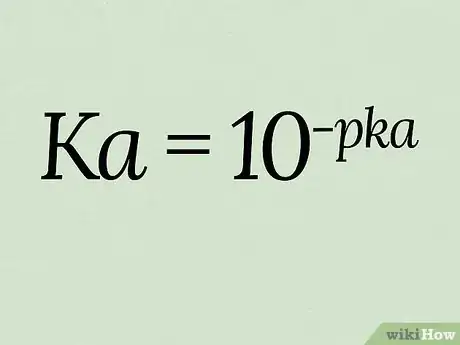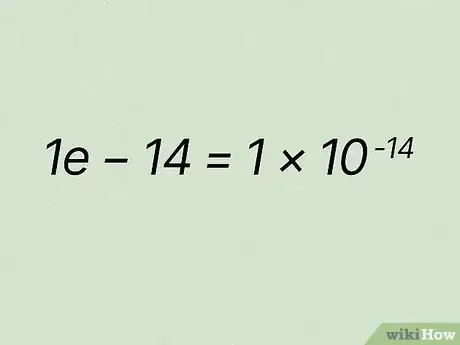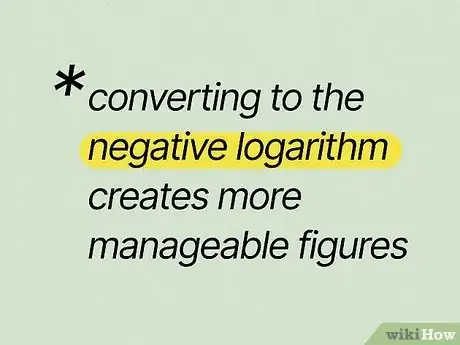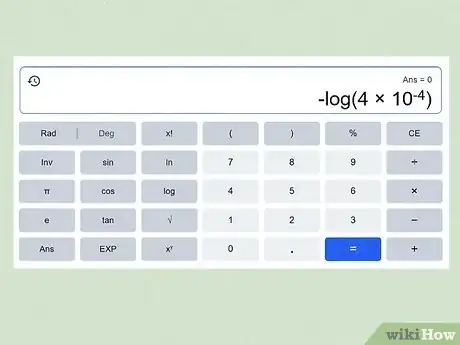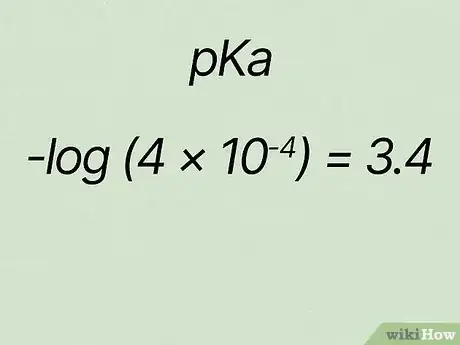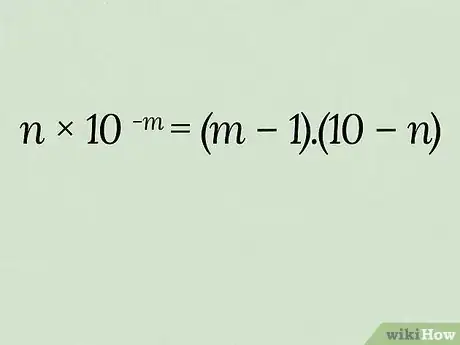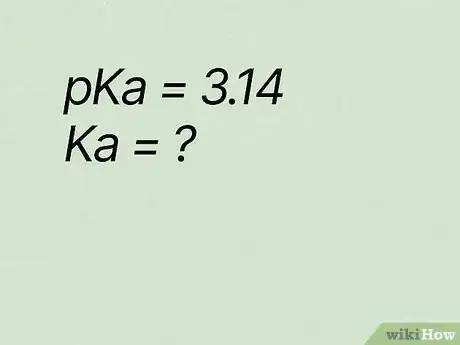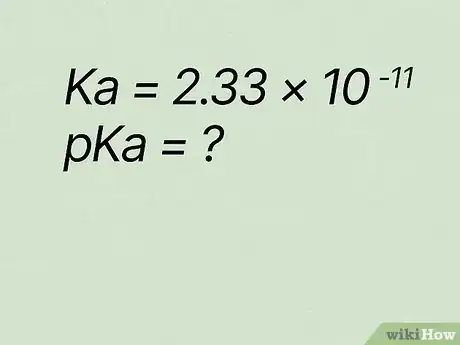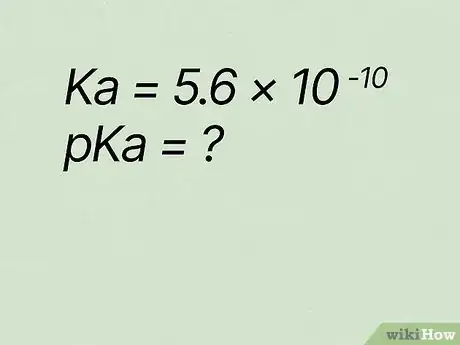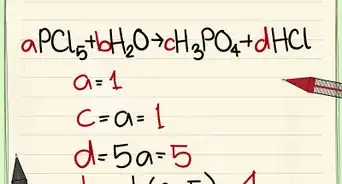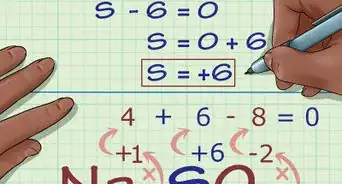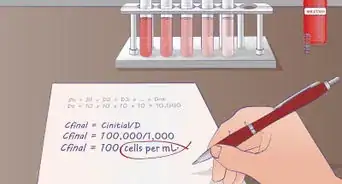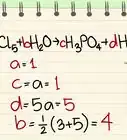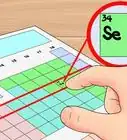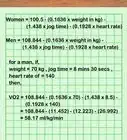This article was co-authored by wikiHow staff writer, Christopher M. Osborne, PhD. Christopher Osborne has been a wikiHow Content Creator since 2015. He is also a historian who holds a PhD from The University of Notre Dame and has taught at universities in and around Pittsburgh, PA. His scholarly publications and presentations focus on his research interests in early American history, but Chris also enjoys the challenges and rewards of writing wikiHow articles on a wide range of subjects.
This article has been viewed 3,986 times.
Learn more...
Ka ()—the acid dissociation constant—tells you the strength of an acid in a different and more specific way than the better-known pH. Because Ka produces extremely wide-ranging values, pKa ()—the negative logarithm (base 10) of Ka—is often used to simplify the range of acid strength values. If all of this is twisting your brain a little, here’s some good news: it’s actually pretty easy to figure out Ka from pKa (or pKa from Ka) with a scientific calculator, or to get a decent estimate without a calculator. And we’ll show you how to do it all!
Things You Should Know
- Calculate Ka from pKa with the equation .
- Calculate pKa from Ka with the equation .
- Estimate pKa from Ka (or vice versa) based on the pseudo-equation .
Steps
Calculating Ka from pKa
-
1Use the equation for this conversion. pKa is defined as the negative logarithm (-log) of Ka, which means you calculate pKa with the calculation . Solving instead for Ka requires you to raise both sides of the equation by exponents of 10:[1]
- →
- For this example, we’ll say (which is in fact the pKa for plain water).[2]
-
2Enter the right side of the equation in your scientific calculator. Using a scientific calculator varies a bit by model and type (for both online and physical calculators), but the buttons are generally similar. For this article, we’ll use the online scientific calculator that appears when you Google “scientific calculator.”
- Type in .
- Press the button.
- Type in the superscript box.
- Press the button.
Advertisement -
3Translate the answer . The result you get may not appear in the format you expect, but it is the right answer. Simply substitute for and raise to superscript:[3]
- equals .
- So a pKa of equals a Ka of .
- In some cases, your calculator may provide the answer in decimal form, such as instead of its equivalent . The latter format is typically how Ka is represented, however.
Calculating pKa from Ka
-
1Do this conversion with the equation . pKa exists largely as a matter of convenience, since the Ka of acids are unwieldy values like and . However, converting to the negative logarithm (-log) of these values creates much more manageable figures like and .[4]
- Converting to the -log means that a lower pKa value indicates a stronger acid, as opposed to the Ka, in which a higher Ka value indicates a stronger acid.
- In this example, let’s make (nitrous acid).
-
2Input the right side of the equation in a scientific calculator. As with our pKa to Ka conversion, we’ll assume you’re using Google search’s scientific calculator:
- Press the button.
- Press the button.
- Enter inside the parentheses.
- Press the button.
- Enter in the superscript box.
- Press the button.
-
3
Sample Problems
-
1What is Ka if pKa equals 3.14?
- → [6]
-
2What is Ka if pKa equals 11.62?
- → [7]
-
3What is pKa if Ka equals ?
-
4What is pKa if Ka equals ?
-
5Estimate pKa if Ka equals .
- Using , plug 5 (from 5.6) in as and 6 (from 5.6) in as in the second half of the “equation.”
- (10-1).(10-6) → 9.4. The accurate result for PKa is 9.25.[10]
References
- ↑ http://www.csun.edu/~jm77307/pH%20and%20Buffers.pdf
- ↑ https://clas.sa.ucsb.edu/staff/Resource%20Folder/Chem109ABC/Acid,%20Base%20Strength/Table%20of%20Acids%20w%20Kas%20and%20pKas.pdf
- ↑ https://www.open.edu/openlearn/mod/oucontent/view.php?printable=1&id=4256
- ↑ https://clas.sa.ucsb.edu/staff/Resource%20Folder/Chem109ABC/Acid,%20Base%20Strength/Table%20of%20Acids%20w%20Kas%20and%20pKas.pdf
- ↑ https://clas.sa.ucsb.edu/staff/Resource%20Folder/Chem109ABC/Acid,%20Base%20Strength/Table%20of%20Acids%20w%20Kas%20and%20pKas.pdf
- ↑ https://clas.sa.ucsb.edu/staff/Resource%20Folder/Chem109ABC/Acid,%20Base%20Strength/Table%20of%20Acids%20w%20Kas%20and%20pKas.pdf
- ↑ http://www.csun.edu/~hcchm003/321/Ka.pdf
- ↑ http://www.csun.edu/~hcchm003/321/Ka.pdf
- ↑ https://clas.sa.ucsb.edu/staff/Resource%20Folder/Chem109ABC/Acid,%20Base%20Strength/Table%20of%20Acids%20w%20Kas%20and%20pKas.pdf





